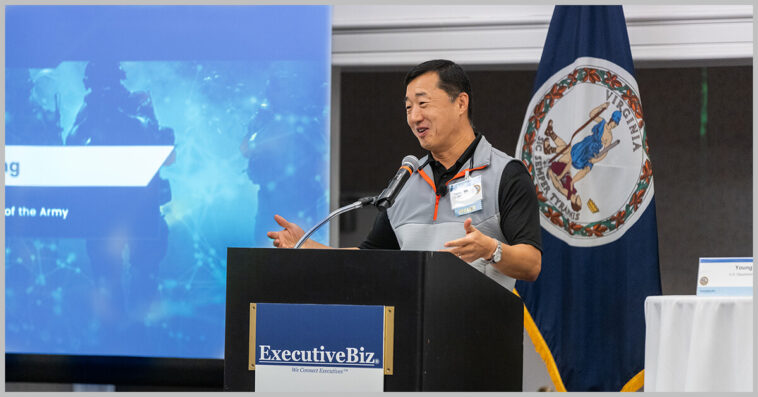U.S. government and military spending in the war in Ukraine has totaled an estimated $30 billion. This is attributable to both the Ukraine Security Assistance Initiative, which has amounted to about $18.6 billion and the presidential drawdown authority, which stacks up to $12.2 billion in assistance.
Young Bang, principal deputy assistant secretary of the Army for acquisition, logistics and technology, says these spending patterns provide immense opportunities for the government contracting companies and original equipment manufacturers that make up the defense industrial base.
Bang told an industry audience at ExecutiveBiz’s Army Acquisition Priorities Forum on Wednesday that the Army is ramping up its production of 155mm artillery rounds at an aggressive rate. At the start of the war, the service branch was producing about 14,000 rounds per month, which they quickly upped to 28,000 per month. By next year, Bang says it is their aim to reach 80,000 and then, soon after, 100,000 155mm projectiles per month.

To gain more insight into the research and development work that goes into various Department of Defense components’ arms and technology production, be sure to attend the Potomac Officers Club’s Defense R&D Summit on Jan. 31. Under Secretary of Defense for Research and Engineering Heidi Shyu will be a central speaker at the event, among many notable others. Register here now!
However, Bang offered some frank advice to help guide how industry members went about their provision of new technologies.
“Innovation is positive disruption. Help us revolutionize those concepts and future concepts. And give us true innovation and solve problems, not incrementally automate the things that we already know how to do,” Bang issued at the event.
He went on to say that intuition with technologies is key; the Army does not want technologies that require a large manual and a lot of toggling back and forth between different platforms to operate. Bang further stressed that when collaborating with private companies, the service branch is not looking for commercial off-the-shelf technologies, but rather tech that has been incubated with the Army’s specific problems and needs in mind.

Some key areas requiring assistance are robotics, electrification and autonomous systems, noting that “the current approach to computer vision and [light detection and ranging] or other sensing will not work in off-road terrains.”
The Army is also looking for tools and strategies that will aid in decreasing the signature and traceability of its defense systems, which currently light up “like a Christmas tree,” per Bang. He says Ukraine and others are currently using Russia’s high signature technologies to their advantage, but that the U.S. needs to learn from this and decrease its signature as well.
Thus, Bang identified three main goals of the Army as “reducing our signature, being decentralized and being on the move.” To accomplish this and all goals, he said personnel are the glue that holds everything together.
“At the end of the day, you can’t do all or any of that really without the people and the training,” Bang surmised, adding, “people, training and exercises—that’s the standard, that drives readiness.”
Potomac Officers Club’s Defense R&D Summit — the first big event of next year — is fast-approaching. Participate to hear more invaluable information like what Bang offered and get a chance to dialogue directly with speakers and colleagues alike. Register here now for the Jan. 31 in-person event.





